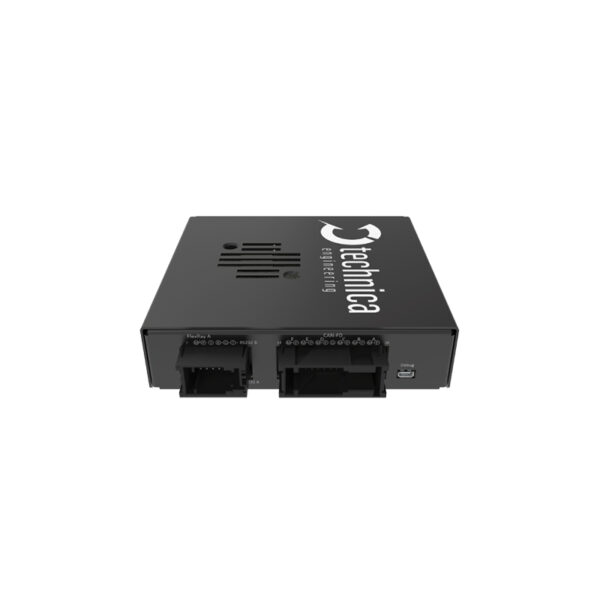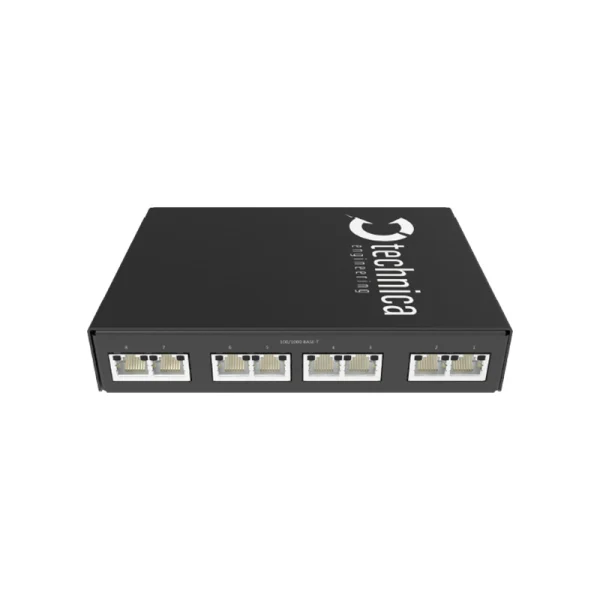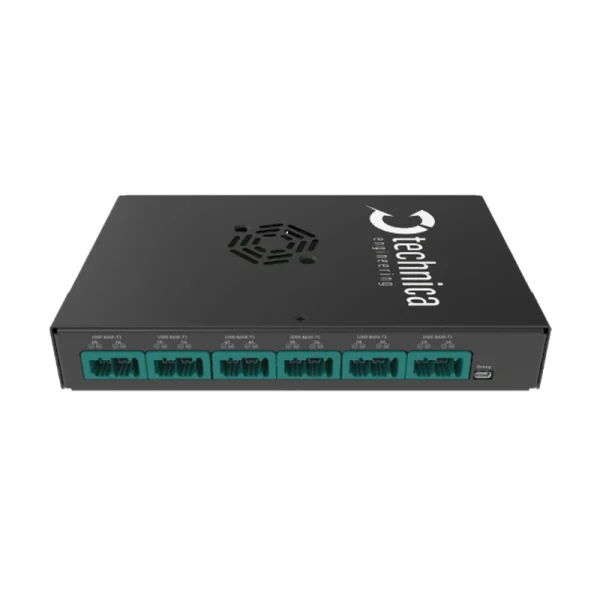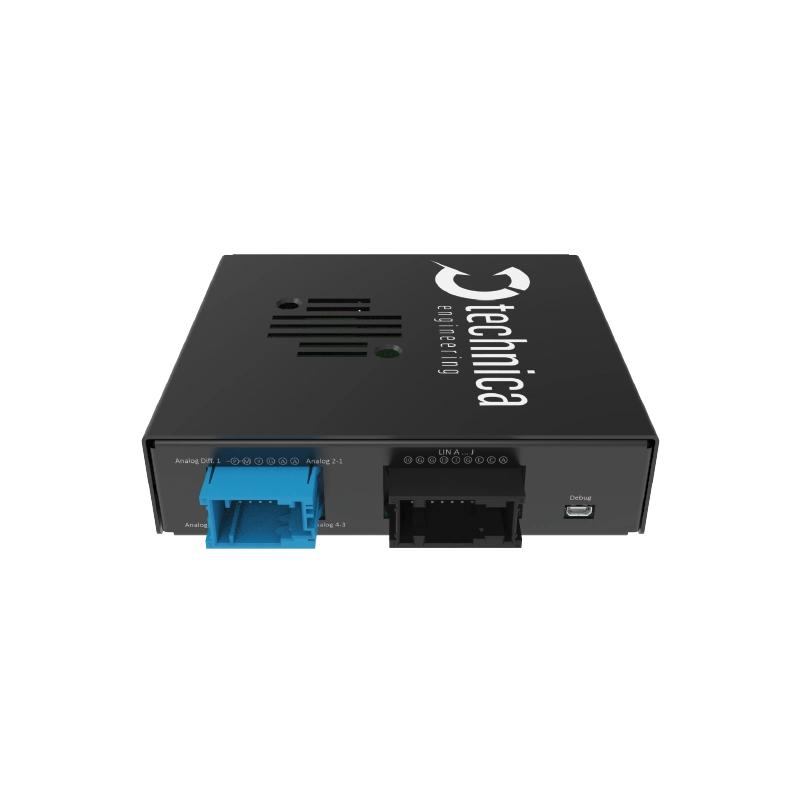
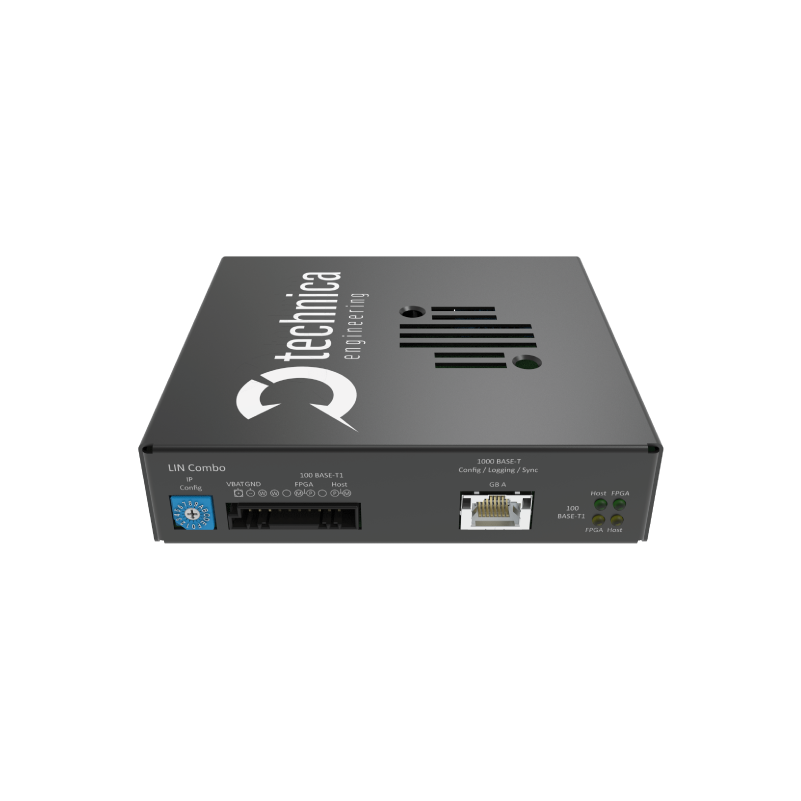
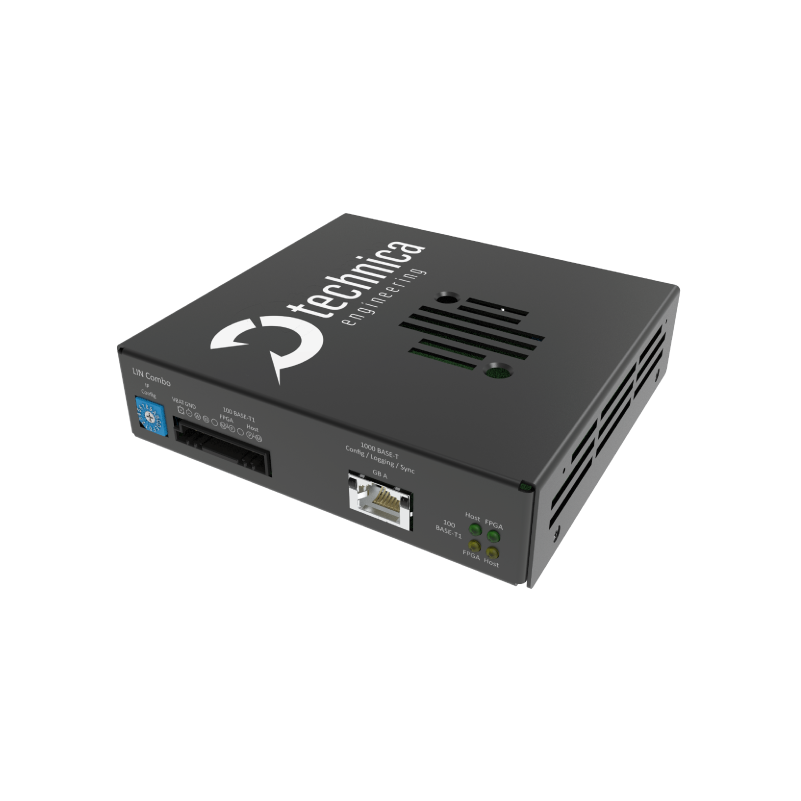
Part Number: TE-1170
CM LIN Combo
Product Description
The CM LIN Combo is an active tap device that can be used to capture the traffic from the conventional LIN busses, as well as differential and grounded analog signals. The data traffic is captured without causing interference on the network and delivered with a 40 ns resolution hardware time stamp for the analysis of AVB/TSN traffic. With a traffic shaping feature included, the logged output of multiple bus channels is steadily transferred to a data logger or test PC, thus eliminating bursts that might lead to a loss of data.
The CM LIN Combo provides all logged data in standard Ethernet frames via the Technically Enhanced Capture Modules Protocol (TECMP). The TECMP is an open protocol that allows for traceability of the source of messages, on-the-source timestamps, packet counters, etc., making Ethernet the ideal logging network. In addition, the PLP protocol is supported. The CM LIN Combo emits messages timestamped with 40ns resolution, providing a fast and efficient solution supported by its extended Power Mode for car integration. Messages are sent within the PDUs of Ethernet MAC II frames via 100BASE-T1 (or Standard Ethernet) and contain the responding time information of when they were captured.
Several devices can be used to capture data on your setup as soon as more interfaces are needed, or in case other IVN technologies have to be captured. The built-in synchronization using 802.1AS allows simultaneous use of the CM LIN Combo together with other Capture Modules. This also enables cascading of multiple Capture Modules via the Enhanced Ethernet Switch.
Via the built-in webserver of the CM LIN Combo, the device can easily be configured on a browser website. Additionally, it includes a rotary switch for the manual configuration of its IP addresses.
This device includes a Startup Buffer and High-Speed Startup feature (< 200ms), so the initial Startup information of ECUs is not lost. This way, the device can record all the important information emitted by the vehicle systems.
Technica Engineering´s Capture Module is a highly innovative and unique traffic-capturing solution, with exclusive characteristics adapted to the current technological requirements in the automotive field. Our new generation of devices is developed to fulfill the most critical requirements in contemporary automotive ECU development, which is the reason why our products are used by the premium OEMs in the field. The variety of additional features of this tap device makes this Capture Module a great choice for a large variety of testing activities.
Technical data
FACTS
- 1 × MQS connector for 10 × LIN channels
- 1 × MQS connector for
- 4 × analog channels
- 2 × galvanically isolated analog channels
- 1 × Rotary switch
- 1 × MQS connector with
- 1 × FPGA port for logging and time synchronization
- 1 × Host port for configuration only
- 1 × RJ-45 Standard Ethernet port for logging and time synchronization
- 6 × Status LEDs (2 of them at the RJ-45 port)
- Optimized for automotive and automotive-like use-cases
- Voltage range: 12-to-24-volt DC
- Power consumption: 4,8 to 6 Watt
- Robust galvanized sheet steel with black powder coated housing
- Size: 129x 121 (133) x 32 mm
FEATURES
- Captures traffic from LIN buses and differential, grounded analog signals
- Use of the Technically Enhanced Capture Module Protocol (TECMP), which is open, royalty-free, and provides timestamping, source information, etc. (natively supported in Wireshark (v3.4). GPL C libraries for conversion to PCAPNG available at https://github.com/Technica-Engineering)
- PLP (Probe Logger Protocol) support
- Easy configuration via web server or dedicated UDP frames
- Network Time Synchronization supports several standards (ANVU gPTP / 802.1AS, PTPv2) – allowing the user to synchronize multiple Capture Module variants and other devices
- Source Timestamping with 40 ns resolution
- High-speed startup (<200ms)
- Startup buffer
- Output traffic shaping
- LIN Transmission (with a license)
- Extended power mode for car integration
Use case
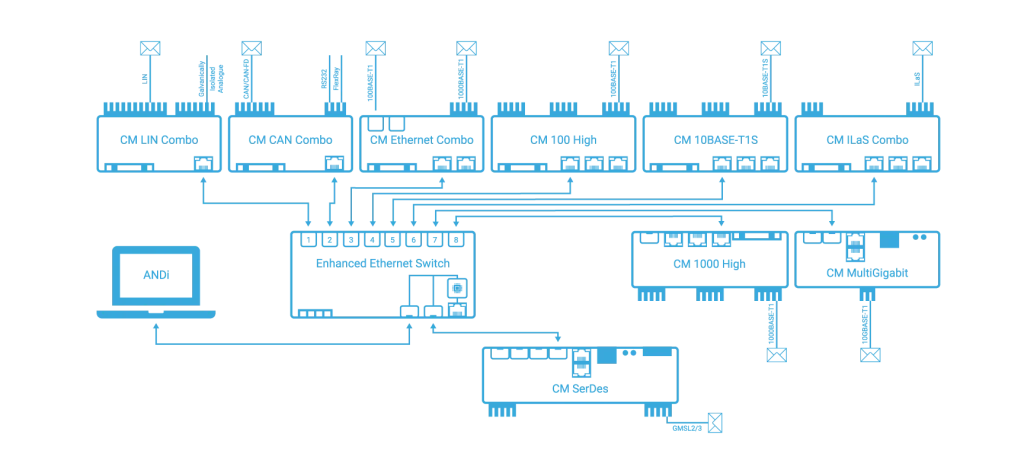
Downloads
Further information below
- flyer Capture Module LIN Combo
- cable set Capture Module LIN Combo
- eu declaration of conformity Capture Module LIN Combo
- CUSTOMER PORTALSign up to discover your user manual and additional benefits!

